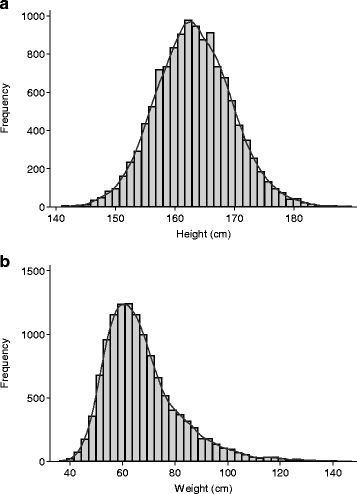Getting started with tables
- PMID: 28321295
- PMCID: PMC5357815
- DOI: 10.1186/s13690-017-0180-1
Getting started with tables
Abstract
Background: Tables are often overlooked by many readers of papers who tend to focus on the text. Good tables tell much of the story of a paper and give a richer insight into the details of the study participants and the main research findings. Being confident in reading tables and constructing clear tables are important skills for researchers to master.
Method: Common forms of tables were considered, along with the standard statistics used in them. Papers in the Archives of Public Health published during 2015 and 2016 were hand-searched for examples to illustrate the points being made. Presentation of graphs and figures were not considered as they are outside the scope of the paper.
Results: Basic statistical concepts are outlined to aid understanding of each of the tables presented. The first table in many papers gives an overview of the study population and its characteristics, usually giving numbers and percentages of the study population in different categories (e.g. by sex, educational attainment, smoking status) and summaries of measured characteristics (continuous variables) of the participants (e.g. age, height, body mass index). Tables giving the results of the analyses follow; these often include summaries of characteristics in different groups of participants, as well as relationships between the outcome under study and the exposure of interest. For continuous outcome data, results are often expressed as differences between means, or regression or correlation coefficients. Ratio/relative measures (e.g. relative risks, odds ratios) are usually used for binary outcome measures that take one of two values for each study participants (e.g. dead versus alive, obese versus non-obese). Tables come in many forms, but various standard types are described here.
Conclusion: Clear tables provide much of the important detail in a paper and researchers are encouraged to read and construct them with care.
Keywords: Categories; Characteristics; Correlation coefficients; Inter-quartile range; Mean; Median; Ratios; Regression coefficients; Relative measures; Standard deviation; Tables; Variables.
Figures
References
-
- Peacock J, Peacock P. Oxford Handbook of Medical Statistics. Oxford: Oxford University Press; 2010.
-
- Bland M. An Introduction to Medical Statistics. 4. Oxford: Oxford University Press; 2015.
-
- Kirkwood BR, Sterne JAC. Essential Medical Statistics. 2. Oxford: Wiley; 2003.
-
- Altman DG. Practical statistics for medical research. London: Chapman & Hall; 1991.
-
- Everitt BS, Palmer C. Encyclopaedic Companion to Medical Statistics. 2. Chichester: Wiley; 2010.
Grants and funding
LinkOut - more resources
Full Text Sources
Other Literature Sources


